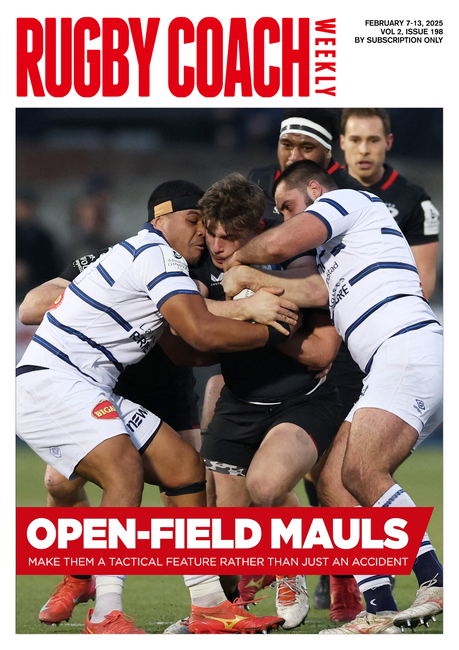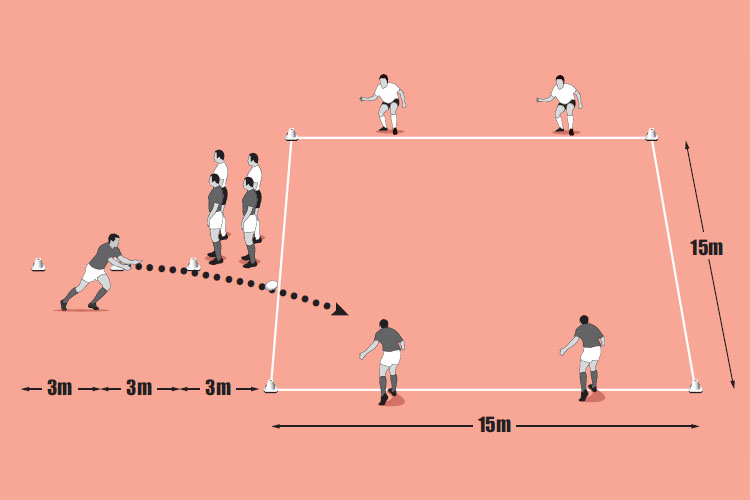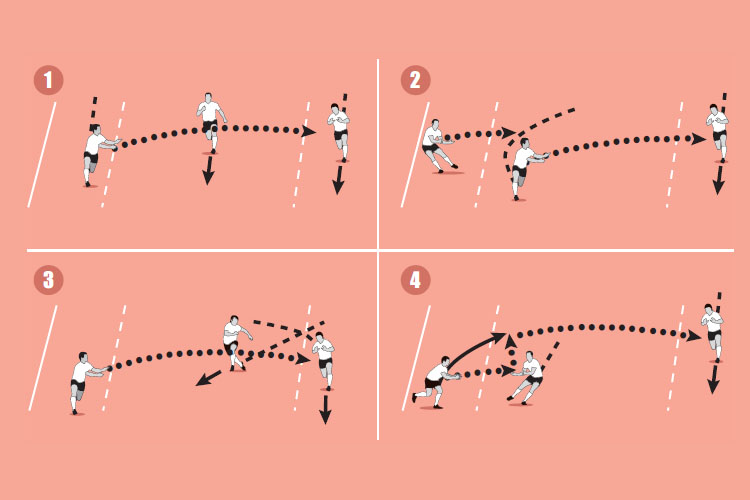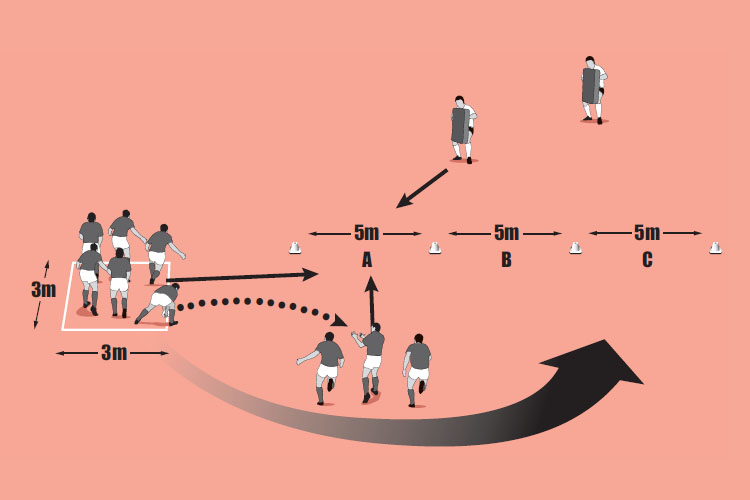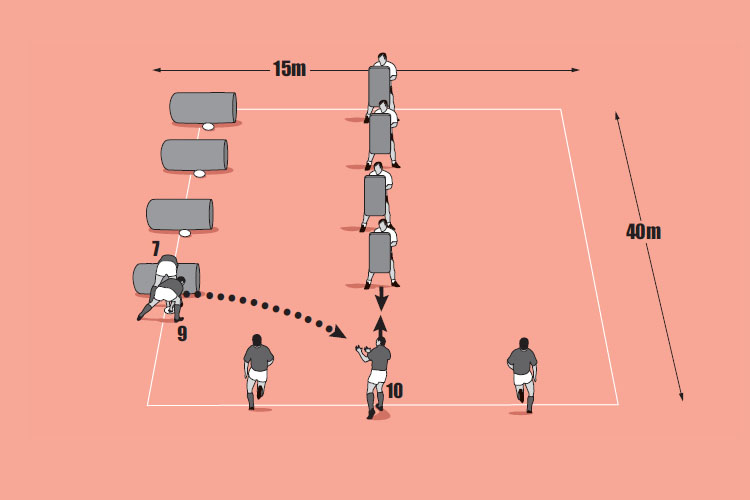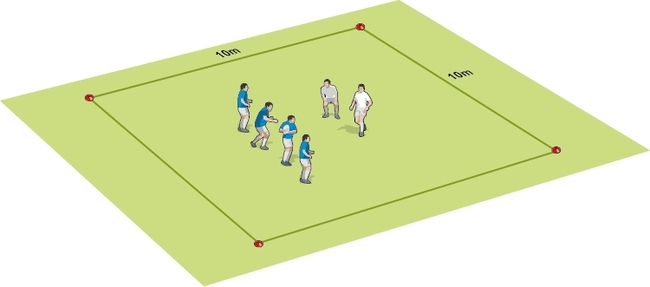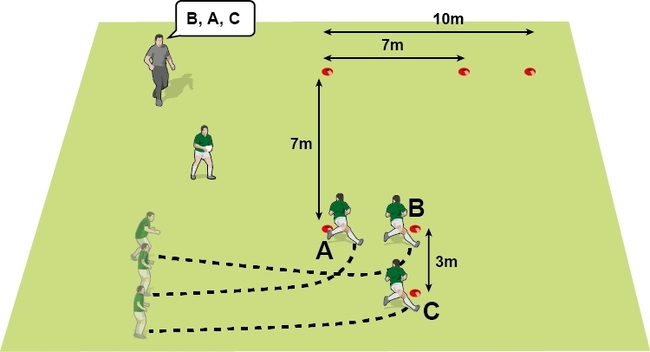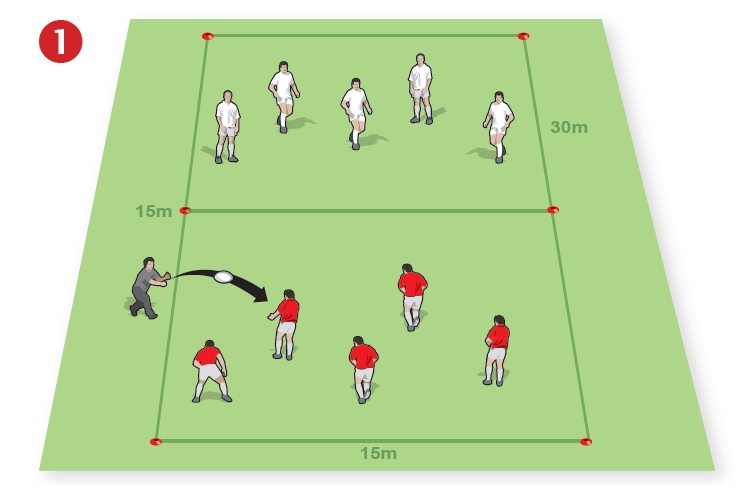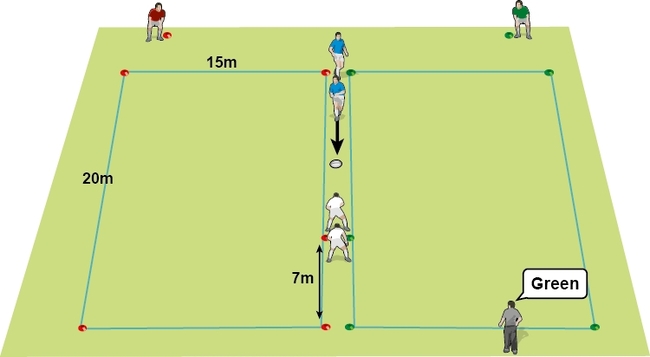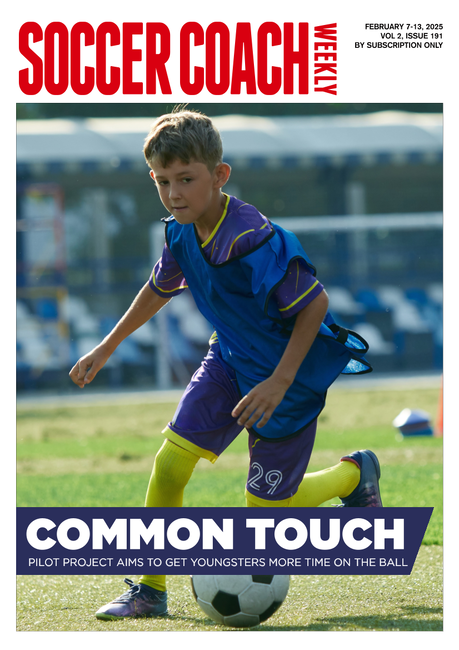Active sets
Once the ball is won at the set piece, the number on a player’s back should have no relevance to the skills and techniques they use. Working together in small groups (sets) and getting used to various tasks helps the players individually and collectively become more aware of what is needed and when, especially at the tackle situation.
Warm up time: 7-10
Session time: 10-15
Development time: 10-15
Game time: 10-15
Warm down time: 7-10
What to think about
Players are often too eager to get to the ball and regularly overrun the tackled player or more crucially the pass. Ensure that the receivers do not move from their starting position until the clearing passer has put his hands on the ball. You could tap the receiver’s shoulder to help them get their timing correct. Communication is a key point, especially when several players are arriving at a tackle situation. To help the players, make sure there are two to three metres between them so their roles are more clearly defined as they arrive.set-up
- The session should have a rhythm to it and this is to do with timing.
- If you are the receiver don’t move until the clearing passer puts his hands on the ball, this is your cue to start.
- Get your hands up and out as a target for the pass.
- Clear the ball away from the tackle situation.
- Chose whether you need to clear away a threat or pass the ball.
What you get your players to do
Split your players into two groups of six and pair them into “sets”. Each set stands in a line behind a cone facing another cone 5m away. One set starts with the ball. Have the first player run out to the cone, fall as if tackled, and place the ball on the ground just before it. He is closely supported by a team mate who takes the role of clearing passer. As soon as the clearing passer puts his hands on the ball, two players from the second set begin their run and repeat the action. The ball is passed between the sets.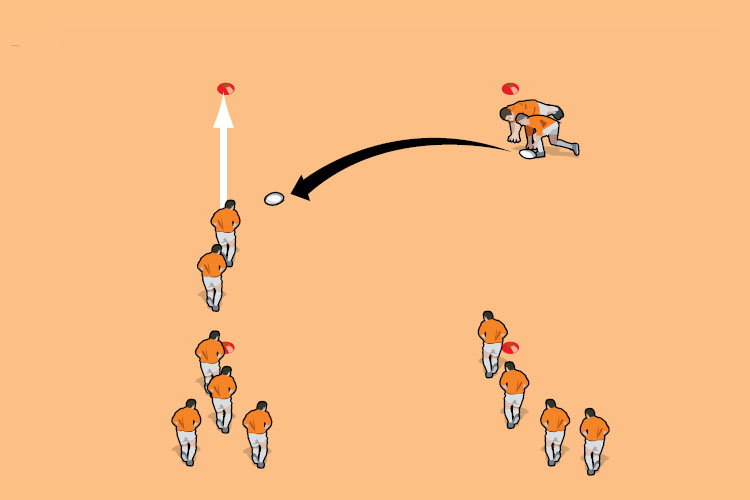
Development
- Add a third group of six and begin to work in sets of three, with the second player securing the ball and the third clearing it away.
- Add an opponent with a ruck pad, plus one more attacker. The ball carrier runs out, makes contact with the pad and drops. The first two support players clear the pad away, the next clears the ball.
Related Files
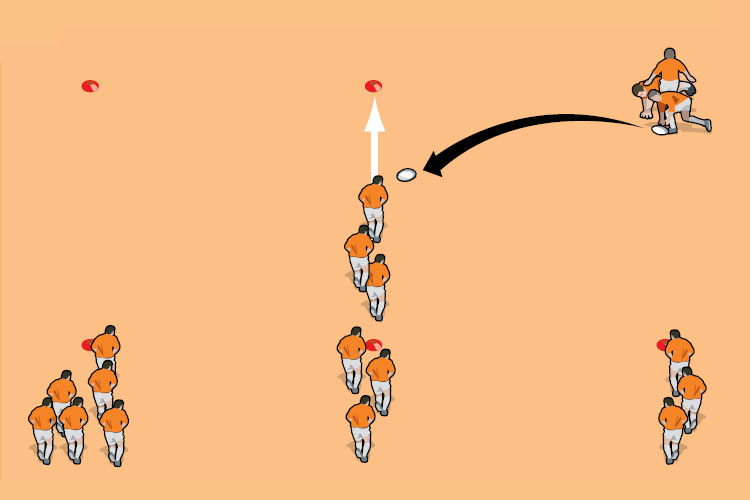
Game situation
Split into two teams of eight. Use touch tackles where the tackled player drops and presents the ball. The defence must keep at least two players at the tackle point, with the rest onside behind the back foot. The attack must secure the ball and then clear it away. The quicker they can achieve this, the more disjointed the defence will be with space opening up.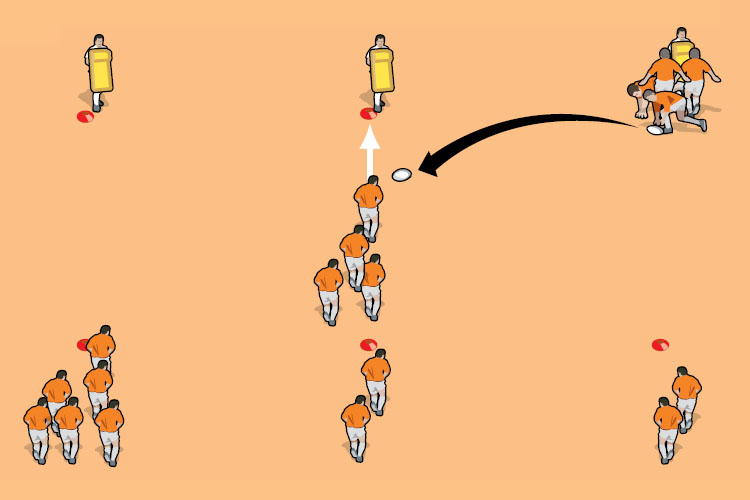
What to call out
- “Talk and confirm roles”
- “Support from deep to read the situation”
- “Get low and powerful to secure the ball”
- “Sweep the pass away”
Newsletter Sign Up
Coaches Testimonials

Gerald Kearney, Downtown Las Vegas Soccer Club

Paul Butler, Florida, USA

Rick Shields, Springboro, USA

Tony Green, Pierrefonds Titans, Quebec, Canada
Subscribe Today
Be a more effective, more successful rugby coach
In a recent survey 89% of subscribers said Rugby Coach Weekly makes them more confident, 91% said Rugby Coach Weekly makes them a more effective coach and 93% said Rugby Coach Weekly makes them more inspired.
Get Weekly Inspiration
All the latest techniques and approaches
Rugby Coach Weekly offers proven and easy to use rugby drills, coaching sessions, practice plans, small-sided games, warm-ups, training tips and advice.
We've been at the cutting edge of rugby coaching since we launched in 2005, creating resources for the grassroots youth coach, following best practice from around the world and insights from the professional game.


